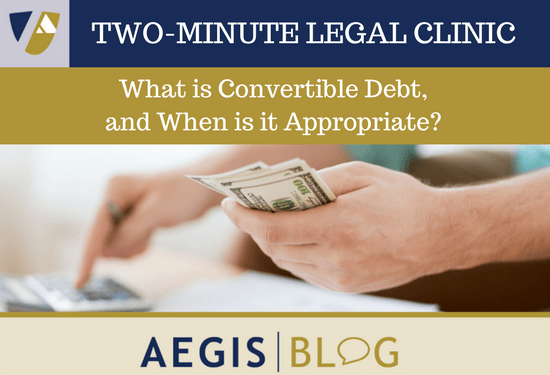Many early stage companies take on “convertible debt” as a means of getting their first substantial dollars into their company for operations. For a long time, when an early- or seed-stage company needed capital, entrepreneurs would wrestle with investor over an appropriate valuation for the company’s equity. The difficulty that no one actually knows what the value of a pre-revenue, pre-everything company could possibly be. So, there was this back and forth, and you know, if you needed the money to bad enough, you would accept a less favorable valuation. And if you had a fair amount of competition for the investment, you could command a higher one. And so, it was a little sloppy and a little disconnected from reality because there’s no objective way of determining valuation at such a young age. As a result, convertible notes became a reasonable alternative.
Why? A convertible note is just like a promissory note – but, it allows for the debt to be converted at a future date. Why is this important? Because at some point in the future, the company will have an objective valuation. Most often, in early stage companies, there are going to be future rounds of financing. And so, what typically happens is that when the investor in the future sets the valuation, the convertible debt holders will have the option to convert their debt to equity at a discount to that valuation. It’s very common in a convertible note to say that the conversion occurs at, for example, a 20% discount to the value of the future investment. So, if the company raises a quarter million dollars through a convertible debt program, and in the future the company raises an additional $500,000 at a $5 million valuation, then the initial note holders would be able to convert their debt at an $4 million valuation. – thus effectively giving them credit for taking risk earlier in the company’s development.





